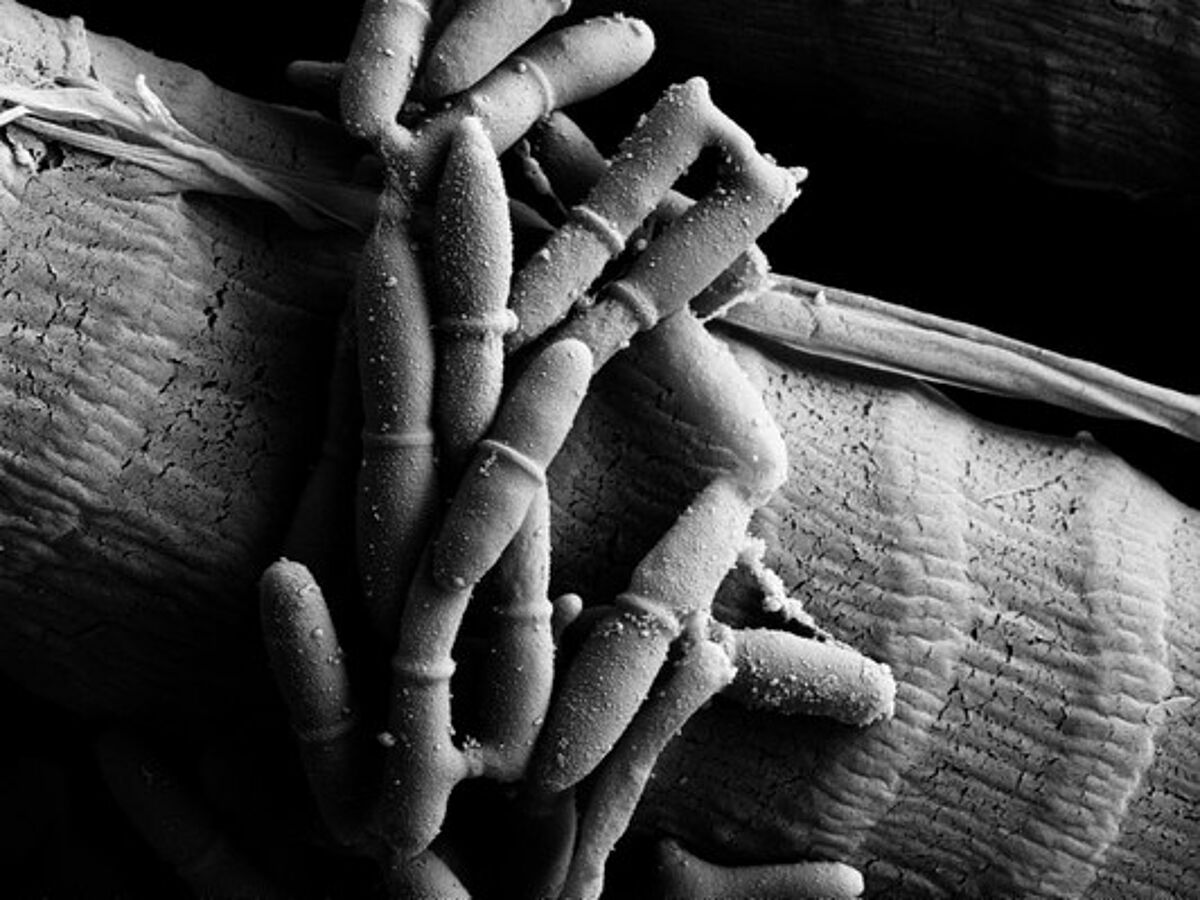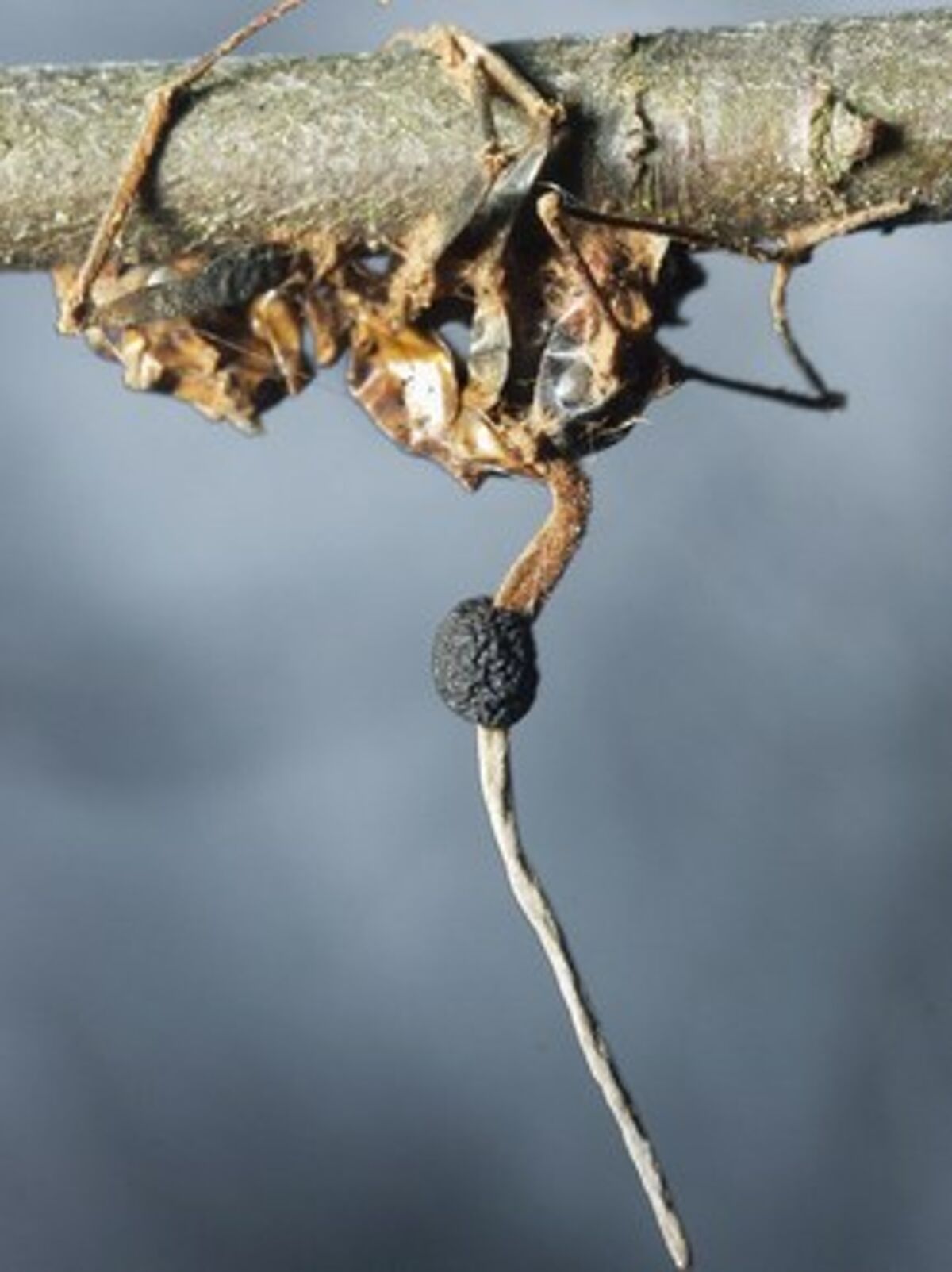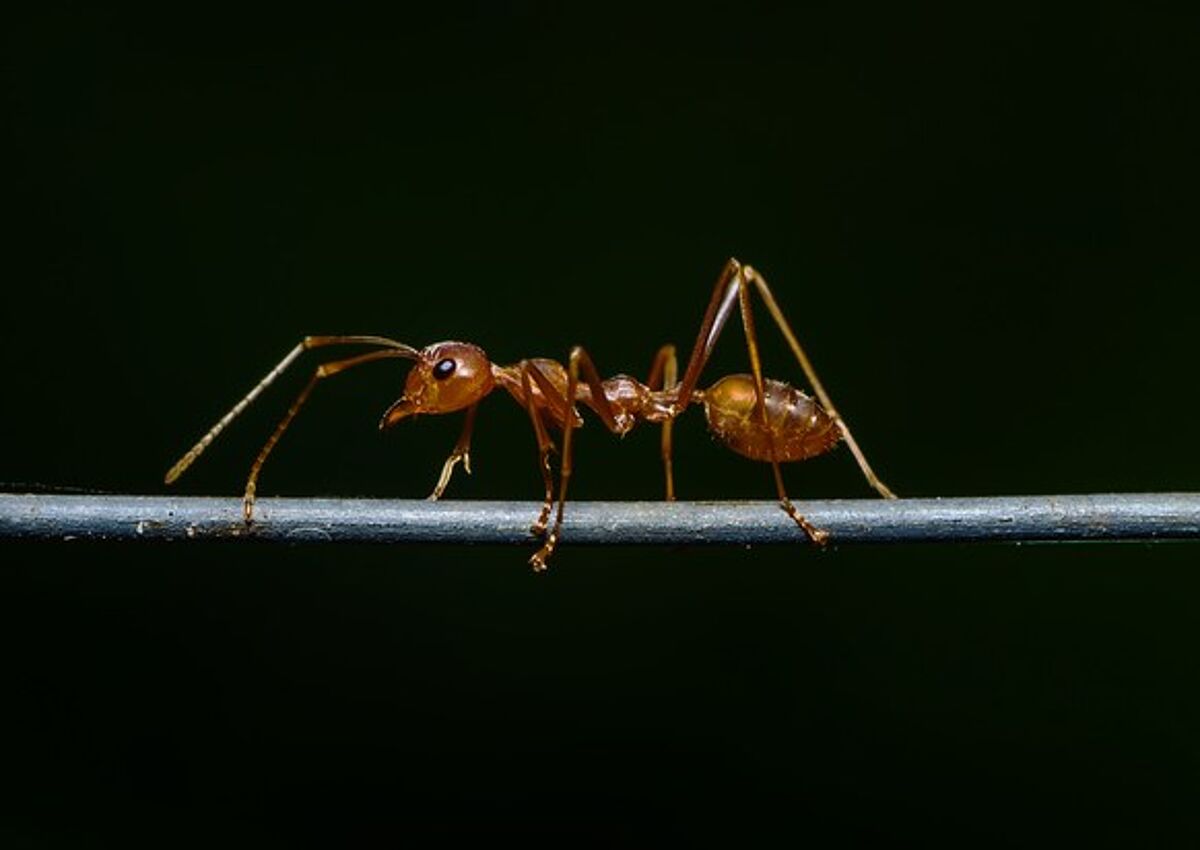The return of the zombie ants: the bite
We've reported on Ophiocordyceps before - this lovely fungus infects a type of South American ant and manages to manipulate its muscles, essentially taking over control. Now, researchers at Penn State University have put a new piece of the puzzle in place—how the fungus gets the ant to bite down on a twig. The answer is every bit as dastardly as you’d expect from a murderous fungus.
When an Ophiocordyceps spore lands on the exoskeleton of an ant, it begins to eat its way through the hard material, eventually infiltrating the innards. Here it grows so-called hyphal tubes throughout the body, forming a network that penetrates the muscles of the ant. Yet even though the fungus manipulates the ant’s behavior in unfathomable ways, it never actually penetrates the brain. Instead, it grows around it and into the muscles that control the nearby mandibles. The Penn researchers used a scanning electron microscope, which images tiny things by bombarding them with electrons, to look at these mandibular muscles in dying ants. “What we found was that the muscle appears to be in a state of forcible contraction,” says molecular biologist Colleen Mangold, lead author on a new paper describing the findings in the Journal of Experimental Biology.
Curiously, the fungus destroyed the sarcolemma around the muscle fibers. But it left intact the neuromuscular junctions, where neurons communicate with the muscles to move them. “What that tells us is that perhaps there might be a central signal coming from the brain and initiating muscle contraction still, since the neuromuscular junctions are maintained,” Mangold says. In other words, the fungus isn’t just breaking into muscle and destroying it willy-nilly, cutting off communication with the brain.
But importantly, the fungus forces the muscle to contract with such power that it ravages the fibers, apparently making them incapable of opening again. The hypothesis, Mangold says, is “that once the ant reaches a location and it bites down, at the time of the bite the fungus secretes something in a synchronous way that causes the forceful muscle contraction and then the death grip.” And voilà, the zombie ant becomes a vector for the fungal pathogen that continues to ravage the colony.
Mangold and her colleagues are particularly curious about what they call extracellular vesicle-like particles—little spheres attached to the fungal cells. “We really don't know what they are,” she says. “We don’t know whether they're derived from the fungus or the host, but perhaps they might be playing a role in initiating contraction of the mandibular muscle.” More mysterious still, these particles appear in ants infected with Beauveria bassiana, a non-zombifying fungal parasite that also destroys the sarcolemma. Destroying the sheath may help both fungi create points of penetration so they can deliver nutrients to their fungal communities within the muscle. And for Ophiocordyceps, exposing the fibers might make it easier to dose them with some sort of toxin required for the manipulation.
So as scientists unravel one mystery of the zombie ant, more mysteries pop up in its place and we hope to be able to bring you more details on this freak of nature in the near future...
This article originally appeared on Wired.



